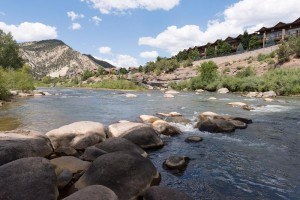Nearly 540 tons of metals – mostly iron and aluminum – contaminated the Animas River over nine hours during a massive wastewater spill from an abandoned Colorado gold mine, the Environmental Protection Agency said Friday in a new report on the 2015 blowout that turned rivers in three states a sickly yellow.

The total amount of metals entering the river system was comparable to levels during one or two days of high spring runoff, although the concentration of metals was significantly higher at the spill’s peak, the report said.
In February, the EPA estimated the amount of metals in the release at 440 tons. The agency said additional data and improved analysis resulted in the higher final estimate.
The EPA said its research supports earlier statements that water quality in the affected river system has returned to pre-spill levels.
An EPA-led contractor inadvertently triggered the 3-million-gallon spill while doing preliminary cleanup work at the old Gold King Mine near Silverton, Colorado. The blowout affected rivers in Colorado, New Mexico and Utah.
The EPA said in its report that only 1 percent of the metals came from inside the mine, while 99 percent were “scoured” from waste piles on nearby hills and stream beds. The iron and aluminum reacted with the river water to cause the eye-catching mustard color that was visible for days as the plume traveled down the river system into Lake Powell, the EPA said.
Besides iron and aluminum, the spill released manganese, lead, copper, arsenic, zinc, cadmium and a small amount of mercury into the river, the EPA said.
The EPA said last month it will pay $4.5 million to state, local and tribal governments for their emergency responses, but the agency rejected $20.4 million in other requests for past and future expenses.
New Mexico Environment Secretary Butch Tongate accused the EPA of using the taxpayer-funded report to try to defend its actions. The state has sued the agency over the spill.
Colorado officials said they had no comment on the report. Utah officials didn’t immediately respond to a request for comment.
Was this article valuable?
Here are more articles you may enjoy.

 Oregon Schools Sued for $9M After Young Girl Allegedly Raped
Oregon Schools Sued for $9M After Young Girl Allegedly Raped  Viewpoint: Striking Risk-Reward Balance for Shipping Lithium-Ion Batteries
Viewpoint: Striking Risk-Reward Balance for Shipping Lithium-Ion Batteries  Report: Vehicle Complexity, Labor ‘Reshaping’ Auto Insurance and Collision Repair
Report: Vehicle Complexity, Labor ‘Reshaping’ Auto Insurance and Collision Repair 